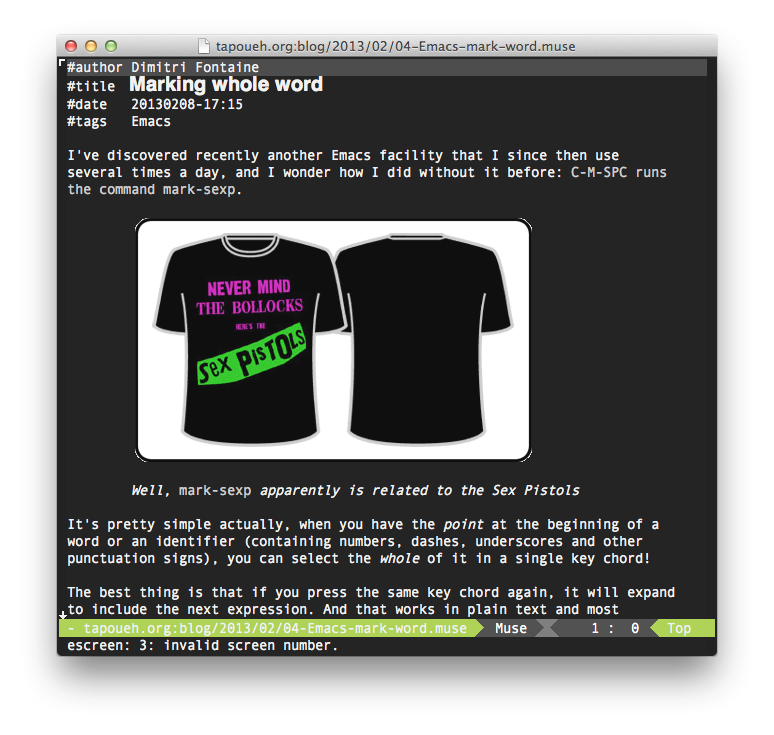This blog of mine is written in the very good Emacs Muse format, that I find much more friendly to writing articles than both org-mode and markdown-mode that I both use in a regular basis too. The main think that I like in Muse that those two others lack is the support for displaying images inline.
*Here's what it looks like to edit with Emacs Muse* The Muse publishing system The idea is that you edit .


